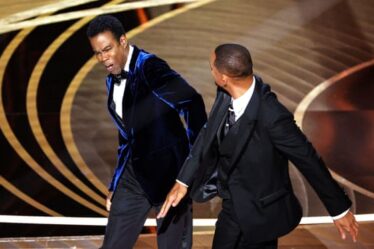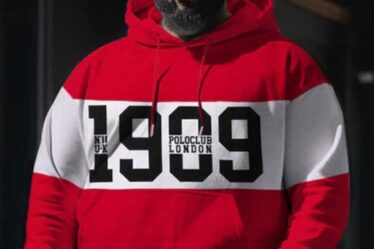Today, a large following on social media does not necessarily offer brands a shortcut to driving the cultural conversation online. Many of fashion’s largest names have a relatively low engagement rate on social media, while smaller brands are able to consistently capture and lead online discourse. For example, Jacquemus regularly generates hundreds of thousands of likes on Instagram posts with a following of 6.4 million, while Dolce & Gabbana, a brand with over 30 million Instagram followers, typically receives fewer than 10,000 likes per post.
Which fashion brands punch above their weight when it comes to social media engagement, and how have they done it?
Measuring Engagement in The BoF Brand Magic Index
The BoF Brand Magic Index is a rigorous brand measurement tool that aims to provide marketers with a data-backed answer to the question of what makes a powerful brand.
In the latest volume, we added Engagement as a metric to analyse how effective 50 fashion and luxury brands are at inspiring customers on social media from October 2023 to March 2024. Engagement is calculated by assessing a brand’s engagement rate on Instagram, as well as how much user-generated content customers create about a brand on TikTok. Collectively, these data points indicate how much buzz a brand is creating irrespective of the actual size of its following, thereby adjusting for brands that generate high engagement simply by virtue of their sizable marketing budgets. The overall Engagement rank is an average of each brand’s rank on TikTok and Instagram.
Who Topped the Index

Diesel and Calvin Klein tied for first place in Engagement, with much of Diesel’s strong performance stemming from the brand’s results on TikTok, and Calvin Klein’s from Instagram. Diesel ranked No. 3 overall on TikTok, after luxury heavyweights Dior and Chanel, with 200,000 user-generated posts using the brand’s hashtag shared on the platform during the period.
By contrast, Calvin Klein ranked No. 4 for its Instagram engagement rate, with its top-liked posts each generating over 2 million likes from its more than 25 million followers. For context, Louis Vuitton, which has nearly double the number of Instagram followers as Calvin Klein, received about 1.5 million likes on its top-performing posts during the period. Notably, no brand ranked in both the top 10 for Engagement on Instagram and TikTok, highlighting the different skills needed to master each platform.
How They Did It
1. Creating Cultural Moments
For Calvin Klein, much of its Instagram engagement can be tied to its viral Jeremy Allen White underwear campaign, which drove 40 million eyeballs to its Instagram, according to the brand’s owner, PVH. For that campaign, Calvin Klein did not just follow its usual strategy of titillating imagery or celebrity; the brand also understood the cultural moment, tying its campaign release to the start of awards season where White was up for a Golden Globe for his role in The Bear, clad in Calvin Klein on the red carpet.
This was savvy brand building on several levels, giving the underwear campaign another boost but also reviving speculation that Calvin Klein was going to give capital-F fashion another try. Sure enough, in May Calvin Klein hired 2023 LVMH Prize winner Veronica Leoni as creative director of its “Collection” line, and said it would return to the runway in 2025.
When a cultural moment does not exist, the best brands know how to orchestrate one. In November, Calvin Klein held a surprise concert with K-pop band BTS’ Jungkook in New York’s Times Square to add buzz to his denim campaign launched that August. An Instagram post from the event was Calvin Klein’s top post in the assessment period, which has since received over 2.7 million likes.
2. Subverting the Status Quo
For Diesel, the denim brand’s popularity on TikTok is evidence that a turnaround under creative director Glenn Martens is resonating — and especially with young audiences. TikTokers regularly post videos about the brand’s tank tops and bags, echoing Diesel’s Y2K aesthetic and subversive, playful positioning.
This idea of subversion runs throughout Diesel’s online strategy. For its February runway show, the brand invited 1,000 viewers to watch “front row” from home, with their faces live-streamed on screens around the runway, creating an immersive and collective viewing experience that was then reshared online.
3. Leaning into the Fanciful and Surreal

Jacquemus was the top performer on Instagram, with an average 2.6 percent of its following engaging with each post during the assessment period. For context, Jaquemus’ 2.6 percent Instagram engagement rate was almost double the second ranked brand. Jacquemus cuts through polished Instagram imagery by leaning into humorous and surreal content that blossoms on social media today, with fanciful store designs and whimsical videos serving among Jacquemus’ top-liked posts in the period.
The brand’s ability to stand out with rewatchable content and visually captivating juxtapositions, coupled with its status as a hot independent label, mean its content is catnip for social media audiences.
4. Giving Audiences a Reason to Engage
Ferragamo ranked the lowest overall in Engagement at No. 47, placing last for both Instagram and TikTok. (Brands ranked 48 to 50 are those that were unable to be assessed because they do not disclose the number of likes on their Instagram accounts as well as Bottega Veneta, which does not have an active account.)
For Ferragamo, its low Engagement rank may be due more to a lack of intrigue rather than any specific action by the company, which has suffered from falling sales amid a turnaround that is taking longer than expected. While Ferragamo presents a well-curated Instagram feed of high-quality product photography and news, the company lacks a distinctive aesthetic or point of view. Fashion brands today face fierce competition for attention on social media, both from other brands but also influencers, stylists and, of course, the friends and family of followers. Lower-ranked brands may need to consider how to act less like a brand and more like a media company to compete for attention.
BoF Insights and Quilt.AI work directly with brands on bespoke engagements to measure Brand Magic in detail and over time, enabling brands to identify positioning opportunities, deeply understand their customers and measure their marketing impact. Contact our team if you are interested in learning how we can work with you.
This article is part of a series that unpacks the assessment metrics in the second volume of The BoF Brand Magic Index.
A sample of The BoF Brand Magic Index featuring more information about the methodology is available for download here.
Full access to The BoF Brand Magic Index is for Executive members. For unlimited access to this and all future editions, become an Executive Member now.



